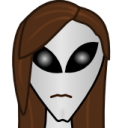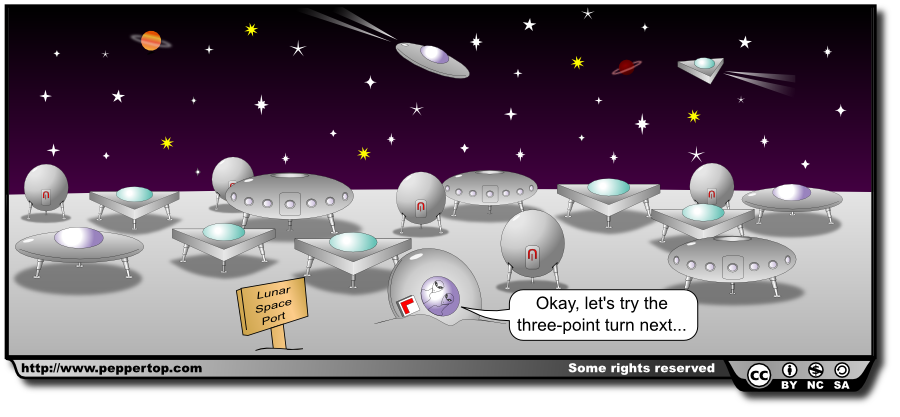Difference between revisions of "UserStories047/Xav"
(Created a new user story page) |
(→Do you give us permission to use this to promote Inkscape?: Clarified the license terms) |
||
| Line 47: | Line 47: | ||
Yes. All our comics are licensed as Creative Commons - Attribution - Non Commercial - Share Alike. | Yes. All our comics are licensed as Creative Commons - Attribution - Non Commercial - Share Alike. | ||
We are happy to waive the Non-Commercial clause for the purposes of promoting Inkscape. The Attribution clause can be fulfilled by using the image as supplied, as it includes our URL in the border, which we consider sufficient attribution. | |||
Revision as of 15:54, 9 July 2009
What is your Name?
Mark - but the comics I produce in Inkscape are done with a friend named Vince, so it's only fair to mention him as well.
Can you give us a Photo?
Have an avatar instead.
What do you think about Inkscape?
It's a wonderful program - especially for the price. We want to actively encourage people to download and remix our comics so using an open format and a freely available application means that anyone can work with our files at no cost.
What would make it even better is a "flat colour" mode, which turns off filters and blurs, and simplifies gradients down to a few bands of colour, in order to speed up the display. Something part-way between the normal view and outline mode. I'd also love to be able to switch the display mode for each layer separately, so that I can have a background rendered as an outline while working on a foreground layer in the normal view.
Can you give us a Hot Tip for using Inkscape?
When creating multi-panel comics we often find that we're using the same basic image in several panels, just changing the speech bubbles. For these kind of comics I like to produce one "master" panel with all the main elements and characters in, then clone it to create the other panels.
I then zoom and pan each of the panels to show the correct content for the strip, and use a clipping mask to "trim" the panels down to the right size. Finally any varying elements - such as speech - are added over the top of the panels individually.
By taking this approach, any last minute changes on the common elements can be done in the master panel and are automatically reflected in the other panels.
We used this technique on this comic.
This and others are all available to download with the Inkscape source files at www.peppertop.com
How did you do it?
Lots of gradients and some cloning. We tend to use groups for all the elements in an individual character or ship to make them easier to move around.
I'm not much of an illustrator (Vince is the really artistic one), so I tend to steer clear of the freehand drawing tools. Often I construct paths by combining simple primitives using boolean operations, then tweak the nodes until I get the shape I'm looking for.
Creating comics that use the same simple characters and ships in each strip means that a lot of the creation process can be simplified down to copying and pasting, followed by a lot of node editing. Although this can be fast, we always seem to find enough new bits that need to be drawn to slow the whole process back down again.
Do you give us permission to use this to promote Inkscape?
Yes. All our comics are licensed as Creative Commons - Attribution - Non Commercial - Share Alike.
We are happy to waive the Non-Commercial clause for the purposes of promoting Inkscape. The Attribution clause can be fulfilled by using the image as supplied, as it includes our URL in the border, which we consider sufficient attribution.

